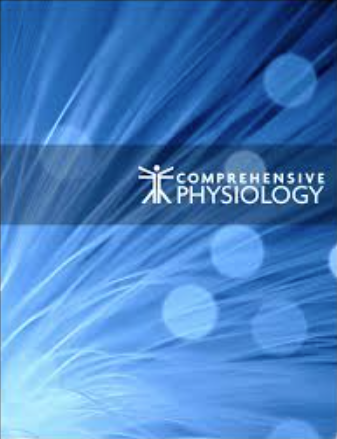下载PDF
{"title":"健康与疾病中骨髓脂肪组织的功能和调节:领域现状与临床考虑。","authors":"Xiao Zhang, Linda Tian, Anurag Majumdar, Erica L Scheller","doi":"10.1002/cphy.c230016","DOIUrl":null,"url":null,"abstract":"<p><p>Bone marrow adipose tissue (BMAT) is a metabolically and clinically relevant fat depot that exists within bone. Two subtypes of BMAT, regulated and constitutive, reside in hematopoietic-rich red marrow and fatty yellow marrow, respectively, and exhibit distinct characteristics compared to peripheral fat such as white and brown adipose tissues. Bone marrow adipocytes (BMAds) are evolutionally preserved in most vertebrates, start development after birth and expand throughout life, and originate from unique progenitor populations that control bone formation and hematopoiesis. Mature BMAds also interact closely with other cellular components of the bone marrow niche, serving as a nearby energy reservoir to support the skeletal system, a signaling hub that contributes to both local and systemic homeostasis, and a final fuel reserve for survival during starvation. Though BMAT and bone are often inversely correlated, more BMAT does not always mean less bone, and the prevention of BMAT expansion as a strategy to prevent bone loss remains questionable. BMAT adipogenesis and lipid metabolism are regulated by the nervous systems and a variety of circulating hormones. This contributes to the plasticity of BMAT, including BMAT expansion in common physiological or pathological conditions, and BMAT catabolism under certain extreme circumstances, which are often associated with malnutrition and/or systemic inflammation. Altogether, this article provides a comprehensive overview of the local and systemic functions of BMAT and discusses the regulation and plasticity of this unique adipose tissue depot in health and disease. © 2024 American Physiological Society. Compr Physiol 14:5521-5579, 2024.</p>","PeriodicalId":10573,"journal":{"name":"Comprehensive Physiology","volume":"14 3","pages":"5521-5579"},"PeriodicalIF":4.2000,"publicationDate":"2024-06-27","publicationTypes":"Journal Article","fieldsOfStudy":null,"isOpenAccess":false,"openAccessPdf":"https://www.ncbi.nlm.nih.gov/pmc/articles/PMC11725182/pdf/","citationCount":"0","resultStr":"{\"title\":\"Function and Regulation of Bone Marrow Adipose Tissue in Health and Disease: State of the Field and Clinical Considerations.\",\"authors\":\"Xiao Zhang, Linda Tian, Anurag Majumdar, Erica L Scheller\",\"doi\":\"10.1002/cphy.c230016\",\"DOIUrl\":null,\"url\":null,\"abstract\":\"<p><p>Bone marrow adipose tissue (BMAT) is a metabolically and clinically relevant fat depot that exists within bone. Two subtypes of BMAT, regulated and constitutive, reside in hematopoietic-rich red marrow and fatty yellow marrow, respectively, and exhibit distinct characteristics compared to peripheral fat such as white and brown adipose tissues. Bone marrow adipocytes (BMAds) are evolutionally preserved in most vertebrates, start development after birth and expand throughout life, and originate from unique progenitor populations that control bone formation and hematopoiesis. Mature BMAds also interact closely with other cellular components of the bone marrow niche, serving as a nearby energy reservoir to support the skeletal system, a signaling hub that contributes to both local and systemic homeostasis, and a final fuel reserve for survival during starvation. Though BMAT and bone are often inversely correlated, more BMAT does not always mean less bone, and the prevention of BMAT expansion as a strategy to prevent bone loss remains questionable. BMAT adipogenesis and lipid metabolism are regulated by the nervous systems and a variety of circulating hormones. This contributes to the plasticity of BMAT, including BMAT expansion in common physiological or pathological conditions, and BMAT catabolism under certain extreme circumstances, which are often associated with malnutrition and/or systemic inflammation. Altogether, this article provides a comprehensive overview of the local and systemic functions of BMAT and discusses the regulation and plasticity of this unique adipose tissue depot in health and disease. © 2024 American Physiological Society. Compr Physiol 14:5521-5579, 2024.</p>\",\"PeriodicalId\":10573,\"journal\":{\"name\":\"Comprehensive Physiology\",\"volume\":\"14 3\",\"pages\":\"5521-5579\"},\"PeriodicalIF\":4.2000,\"publicationDate\":\"2024-06-27\",\"publicationTypes\":\"Journal Article\",\"fieldsOfStudy\":null,\"isOpenAccess\":false,\"openAccessPdf\":\"https://www.ncbi.nlm.nih.gov/pmc/articles/PMC11725182/pdf/\",\"citationCount\":\"0\",\"resultStr\":null,\"platform\":\"Semanticscholar\",\"paperid\":null,\"PeriodicalName\":\"Comprehensive Physiology\",\"FirstCategoryId\":\"3\",\"ListUrlMain\":\"https://doi.org/10.1002/cphy.c230016\",\"RegionNum\":2,\"RegionCategory\":\"医学\",\"ArticlePicture\":[],\"TitleCN\":null,\"AbstractTextCN\":null,\"PMCID\":null,\"EPubDate\":\"\",\"PubModel\":\"\",\"JCR\":\"Q1\",\"JCRName\":\"PHYSIOLOGY\",\"Score\":null,\"Total\":0}","platform":"Semanticscholar","paperid":null,"PeriodicalName":"Comprehensive Physiology","FirstCategoryId":"3","ListUrlMain":"https://doi.org/10.1002/cphy.c230016","RegionNum":2,"RegionCategory":"医学","ArticlePicture":[],"TitleCN":null,"AbstractTextCN":null,"PMCID":null,"EPubDate":"","PubModel":"","JCR":"Q1","JCRName":"PHYSIOLOGY","Score":null,"Total":0}
引用次数: 0
引用
批量引用


